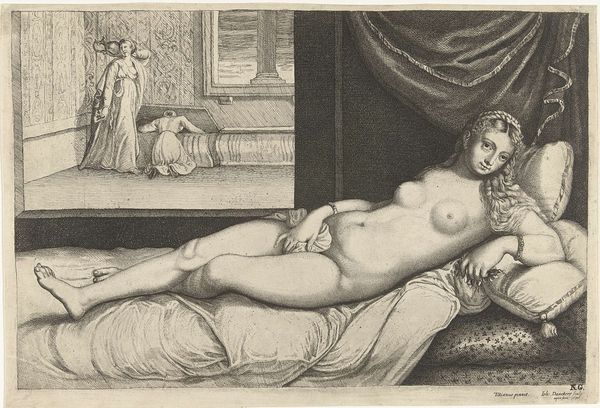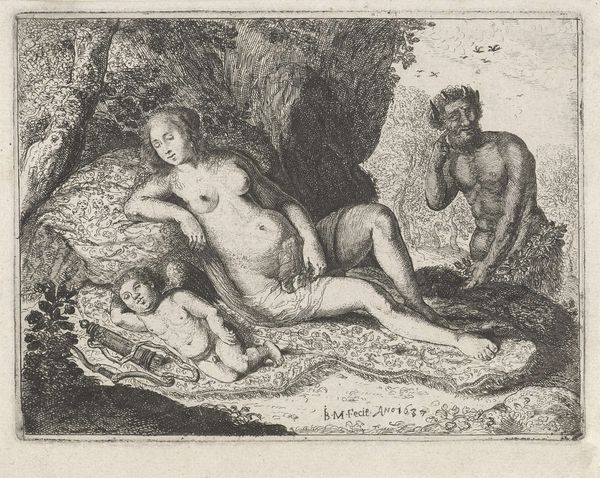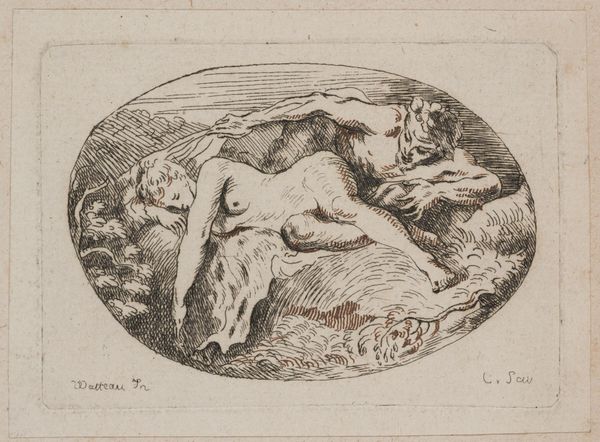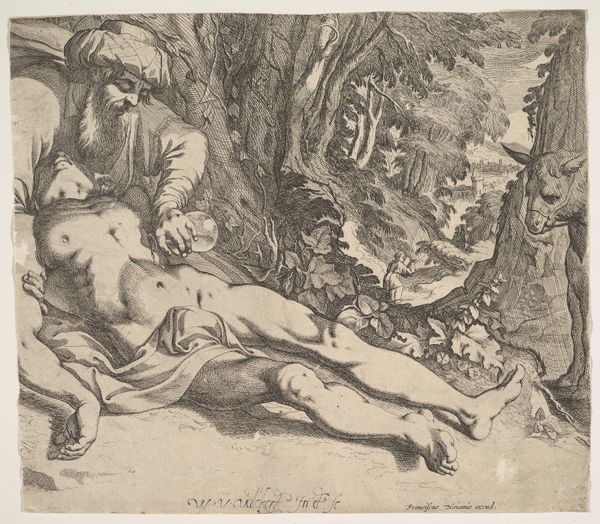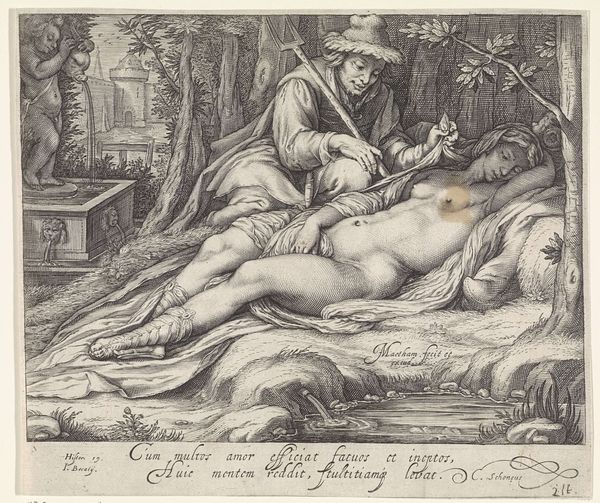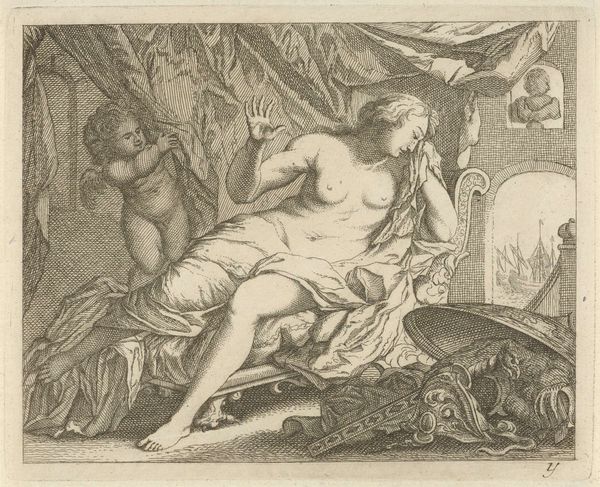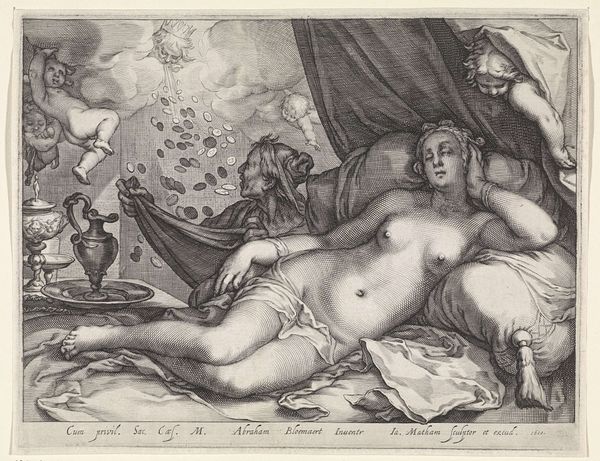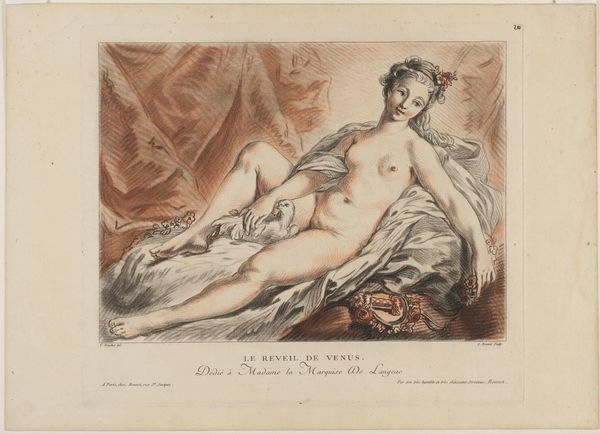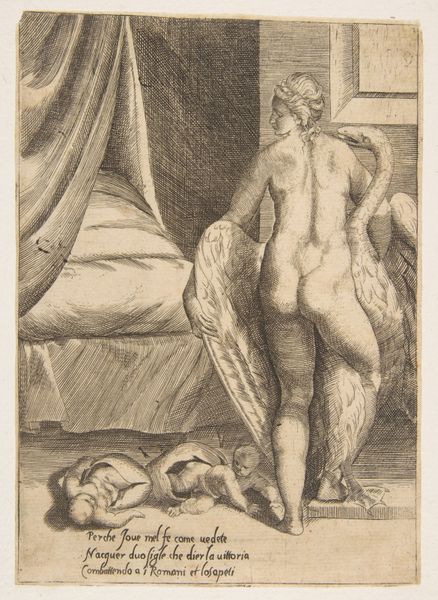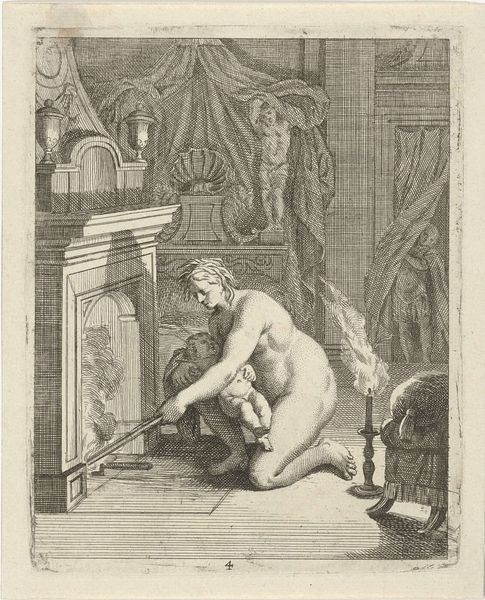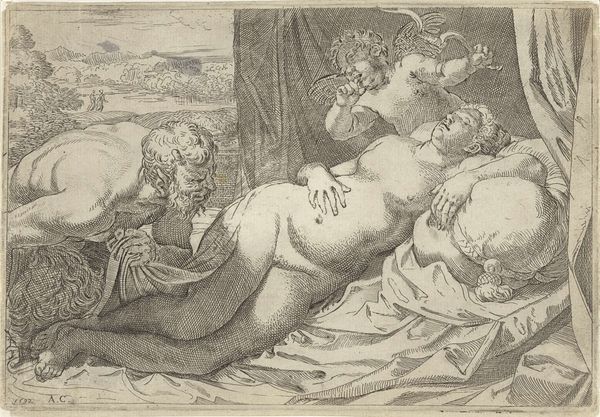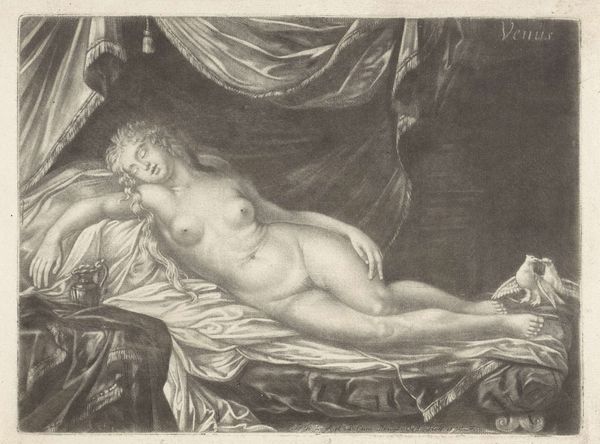
etching
#
allegory
#
baroque
#
etching
#
landscape
#
figuration
#
genre-painting
#
nude
Dimensions: height 115 mm, width 151 mm
Copyright: Rijks Museum: Open Domain
Curator: Here we have Arnold Houbraken's etching, "Sleeping Nymph with a Dog Spied Upon by a Satyr," created sometime between 1688 and 1700. It’s currently housed right here at the Rijksmuseum. Editor: My first thought? A definite… unease. This isn't just a pastoral scene. The vulnerability of the sleeping nymph, contrasted with the satyr's leering gaze, it’s quite jarring. Like stumbling into someone else’s dream—or nightmare. Curator: That contrast is very deliberate. Houbraken utilizes the figure of the satyr, a stock character within mythological narratives, to explore themes of voyeurism, temptation, and the inherent tension between the idealized and the base. This piece reflects prevailing ideas in Baroque period, doesn't it? The tension! Editor: Definitely picks up on that baroque dramatic flair. I’m noticing the fine detail etched into this piece; particularly the almost unsettling, watchful eye of the Satyr in the lower-left quadrant of the picture plane. But beyond the drama, I see an unexpected softness too. The dog is almost a sympathetic character, sleeping soundly in ignorance of the imminent trespass of privacy. Do you see something of that? Curator: Interesting you bring that up. You're not wrong, of course, but perhaps that softness underscores the moral message of the work? I see the dog also representing ideas of the innocence and fidelity now at risk in this vignette. Consider how that small, oblivious figure heightens the disturbing quality that lingers throughout the scene. The setting, though somewhat bucolic and rendered beautifully by the artists' etchings, is only meant to show just how *public* such vulnerability can be. Editor: Public! You hit on something I had not truly considered. So much classical artwork speaks to the hero’s journey or great feats in a public sphere, that is true; but here the intimate is forced into the full gaze of what might resemble spectators. Does this begin to question if our most private, peaceful selves are *ever* truly secure, then? I would expect nothing less from something wrought from the Dutch Baroque! Curator: Indeed. Houbraken challenges us to consider the ethics of observation, the gaze, and the ever-present threat to innocence within seemingly idyllic settings. Editor: And it's these layers, these tensions between beauty and threat, repose and intrusion, that continue to make "Sleeping Nymph with a Dog Spied Upon by a Satyr" so compelling centuries later. Art doesn't merely show, but often subtly challenges us in how we gaze at the very thing it wants to share.
Comments
No comments
Be the first to comment and join the conversation on the ultimate creative platform.
